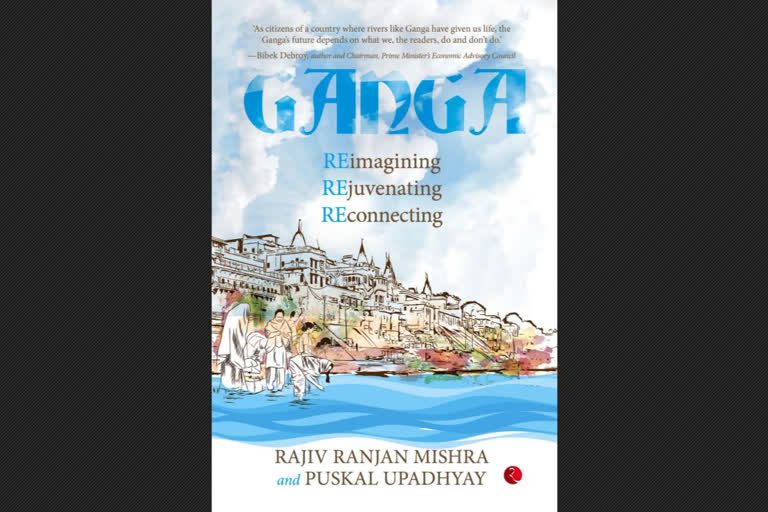New Delhi: Taking charge of cleaning and maintaining water bodies, lakes and stretches of rivers can go a long way in nurturing and sustaining them for the future and will also help reduce the carbon footprint of the country, says a new book on Ganga rejuvenation.
In "Ganga: Reimagining, Rejuvenating, Reconnecting", authors Rajiv Ranjan Mishra and Puskal Upadhyay describe among other issues how the National Mission for Clean Ganga (NMCG) team took up its task keeping in mind not just the enormity of it but also the scar of past failures of cleaning the river. Apart from being India's longest and most revered river, Ganga and its tributaries traverse 11 states and provide a livelihood to nearly 43 per cent of Indians. But Ganga has been getting polluted, with its ecology and flow endangered. Many initiatives to clean the river ended up either being hugely inadequate or dismal failures. And this haunting legacy stayed with the NMCG team every step of the way in its long, complex and daunting journey, say Mishra, a former DG of NMCG, and Upadhyay, financial advisor at NDMC.
From the beginning, the team adopted a radically different and holistic approach to resolve the "wicked problem" while dealing with multiple stakeholders and their clash of ideas on the road ahead. The book, published by Rupa, chronicles this long and complex journey so far transcending the challenges of over-abstraction of water, pollution abatement, bringing behavioural change, and making collaborative partnerships to achieve their goals. Since the establishment of NMCG in 2011 and the launch of Namami Gange in 2014, many facets of rejuvenation like clean villages, ghats and crematoriums, improving ecology and flow, biodiversity and wetland conservation, plantation, strengthening People-River connect, research, knowledge dissemination, and public participation have been initiated. These efforts aim to make the river not just clean but also rejuvenated, a concept still new to many countries, the book says.
"This achievement is phenomenal for any river conservation project in modern India, especially by an entity that grew and continued with the programme. In the process, its human capital, i.e., its employees, kept growing and produced tangible outcomes and laid the foundation of a model for other rivers," it says. The authors say sustaining the river needs sustaining its ecology and creating conditions so that the river can continue to perform its ecosystem services. "This means that we need to focus with systems approach and look at water, sediments, aquatic life, catchment area, etc. all taken together." They rue that most industries only pay lip service to environmental concerns and minimally comply with legal requirements.
Also watch:Govt to monetise treated sewage water removed from Ganga
"Commitment towards nature is lacking even though issues of environmental, social, governance (ESG) and sustainability of businesses have increasingly become important for regulators and investors at home and abroad." "Thus, taking charge of cleaning and maintaining water bodies, lakes and stretches of the river can go a long way in nurturing and sustaining them for the future and will also help reduce the carbon footprint of the country," the book says. The authors feel that the management of water resources, including rivers, has to be looked at through a more holistic lens where water is not just a resource to be exploited, but one that sustains economies and ecosystems into the future. "The integrated management of both surface and groundwater and how they interact with society and the economy is a starting point towards water security and sustainability of the river," they write.
There is also an urgent need for states to come together to discuss, analyze and strategize their water management plans, and is perhaps the first step in this direction, they say. Secondly, the job of sustaining the river should become the responsibility of both the urban local bodies and residents of the state, which calls for a bottom-up approach to the whole issue, they add. The book also says that the revival of the river has seen the return of certain aquatic life, long declared dead or extinct. For instance, the Ganga Dolphin, which had gone missing for some time now, has suddenly become visible near Varanasi and other stretches of the Ganga. The Ganga Praharis in Kolkata have reported sightings of the Bengal shark, not seen since 1965, it says. (PTI)
